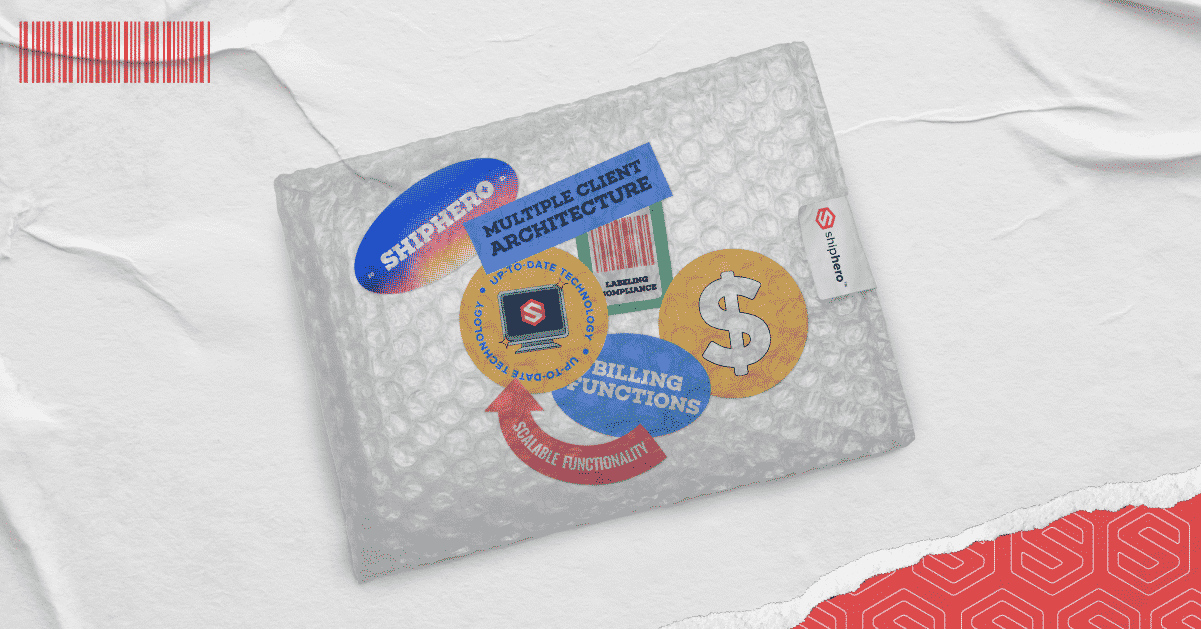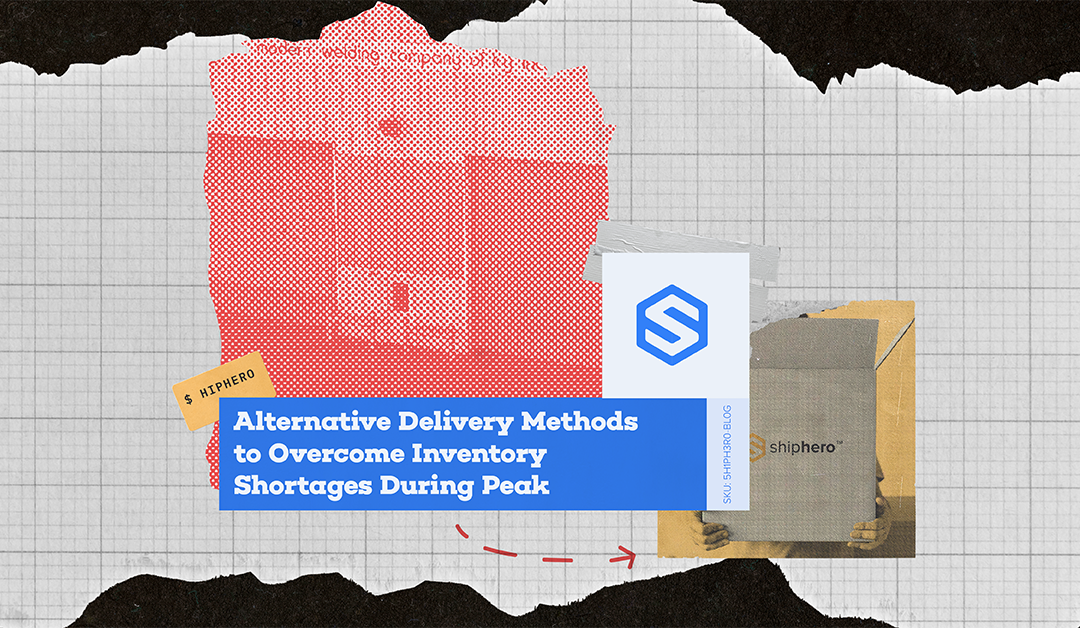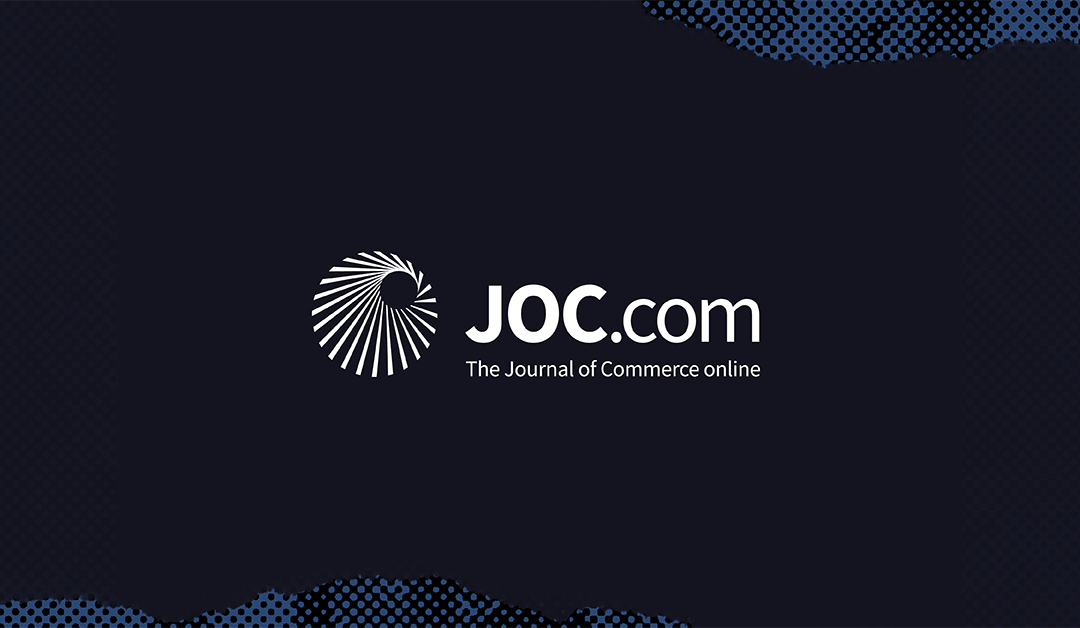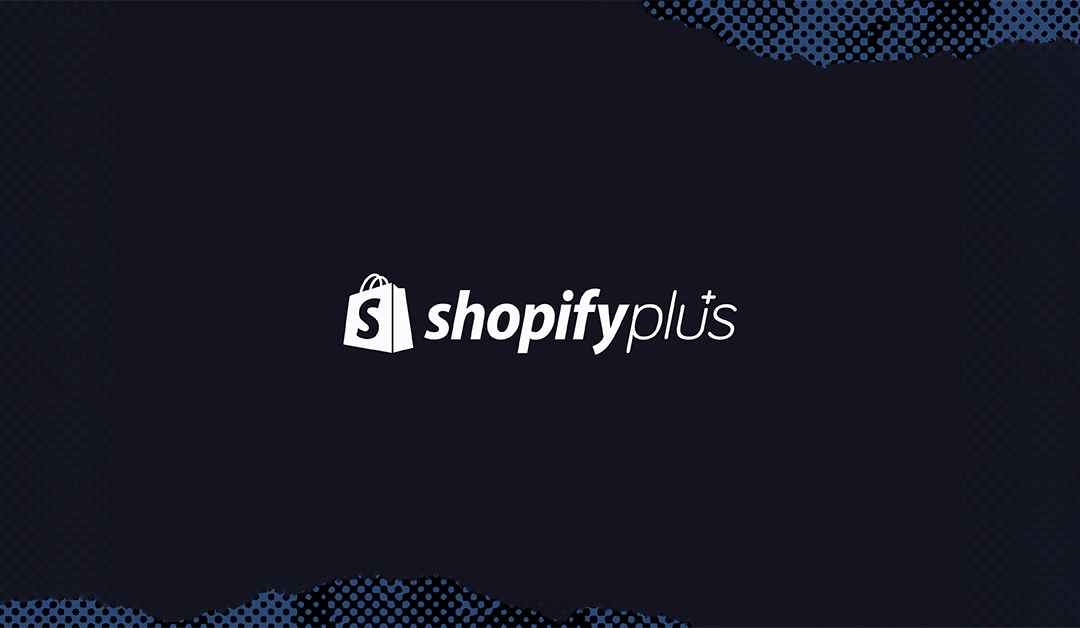Apr 27, 2022 | Blog

Order fulfillment is a multi-stage process that involves picking, packing, processing and shipping a customer’s orders. There are many moving parts in order fulfillment, and any hitches can result in customer complaints. Fortunately, there are many best practices and proven tips for operating your 3PL business.
One of the best ways for clients to manage their inventory and order fulfillment process is to hire a third-party logistics company. 3PL companies provide access to 3PL logistics software that helps you oversee your work and automate many tedious parts of the order fulfillment process.
Keep reading to learn more about third-party logistics software and what to consider when shopping for one.
What is a 3PL Warehouse Management System?
A 3PL warehouse management system is software that assists in a company’s logistics operations. Some of its key features include:
- Warehouse task management
- Process detailing for picking, packing and shipping
- Delivery trackers
- Shipping route optimization
Why Should You Use 3PL Software for a Small Business?
3PL software for small businesses comes with many benefits. Here are some of the reasons why you should use 3PL software for small businesses:
Save Time and Money
3PL software can track orders, generate invoices and process payments automatically, reducing the time needed to do these often lengthy tasks. In addition to saving time, automating these tasks means you don’t have to pay for additional data entry clerks, reducing your operational costs.
Reduce Human Error
Manual data entry and processing are prone to errors, especially if the information passes through many people. 3PL software automates the process to prevent costly mistakes and human error.
Fulfill Your Clients’ Needs
Different companies have different needs, which is why 3PL software is highly customizable. You can modify the features according to client requirements and scale up by adding extra features as your company grows.
Make Better Informed Decisions
3PL software comes with reporting tools that give you insights into inventory, staff performance and other key company information. These reports help you make better decisions based on accurate real-time data.
What Are the Benefits of Using 3PL Software?
The success of your logistics business is largely determined by client satisfaction. Today, customers expect their orders to arrive as soon as possible, and they also want to track their orders during the entire shipping process.
For small businesses, these operations can often be managed in-house but for larger businesses, outsourcing the order fulfillment process to a third-party logistics provider is the best way to ensure accuracy and efficiency for high-volume supply chain operations.
The benefits of using 3PL software include the following:
Time Saved Through Automation
3PL software saves logistics providers and their clients a lot of time through various task automations and process integrations. 3PL software can track orders, handle payments automatically and save reports and invoices in one place rather than spread it across multiple databases.
eCommerce platform integrations with 3PL software, such as Shopify and Amazon, automatically capture orders and add the information right into your database.
Reduced Costs on Both Ends
3PL software’s numerous automations reduce costs for logistics providers because they pay less for data entry clerks. In turn, these cost savings mean lower shipping costs for clients.
Lower Risk of Error
When different stages of the order fulfillment process are handled manually, there is a risk of error at each stage and when data passes from one stage to the next. 3PL software automatically stores and processes all the data to prevent costly human errors.
Customization and Scalability
The beauty of 3PL software is that it can be customized and scaled to suit the needs of individual clients. This makes for no-hassle transitions if your company adds inventory, opens a new distribution center or enters another market.
Insight Into Your Clients’ Business
3PL software reports the entire supply chain activity from production to shipping. This means you can see what’s happening in any part of the business at any time.
Increased Transparency
Trusting a 3PL to handle your entire supply chain is not easy. Fortunately, 3PL software like ShipHero lifts the weight off your shoulders by providing full visibility into logistics performance and current inventory to ensure everything is going as it should be.
Improved Customer Support
3PL software can track orders and payments from beginning to end, which means that your customers can track shipments in real-time and easily make returns. 3PL software also makes it possible to offer expedited shipping options like same-day and two-day shipping.
3PL software offers end-to-end order tracking, allowing customers to track all deliveries in real time. This software also ensures your same-day and two-day shipments arrive on time by routing last-mile deliveries from the nearest fulfillment centers to the customer.
Every business is unique, so using 3PL software may make more sense for some companies than others. If you’re considering moving to third-party logistics, keep reading to find out what to keep in mind when shopping for 3PL software solutions.
6 Things to Look for When Choosing 3PL Software
Working with third-party logistics companies means the client is handing over the entire order fulfillment process to somebody else. Making the wrong choice could cost your company money in the long run. If things go poorly, you might lose clients, which could cause your business to suffer.
When looking for the best 3PL software, here’s what to search for:
Up-To-Date Technology
Your 3PL provider of choice should have the best technology at their disposal. The most advanced third-party logistics software can save you a lot of money and reduce errors through automation.
Scalability
Most businesses outsource to a 3PL company because they’ve grown too large for an in-house logistics department. If you plan to work with growing companies, choose 3PL software that can scale with their business.
Product Packaging and Labeling Standards
Logistics businesses need to obey certain rules and regulations about product packaging and labeling. Good 3PL software will help you fulfill these requirements and prevent issues in the future.
Support for Multiple Client Accounts
There may be several 3PL software users in a single company because each division needs real-time access to the data stored there. Good 3PL software should offer multiple user accounts so people from different divisions can log into the app simultaneously.
Invoicing Features
A common feature in most 3PL technology solutions, billing functions ensure that invoices are paid out properly. This type of software automates putaway, receiving, storage and shipping so that the charges for these services are always accurate and on time.
Great Value
Many clients work with 3PL providers, so they don’t have to pay for logistics software. To give your clients the best value and service, get 3PL software with affordable prices and advanced features.
There are many 3PL software choices on the market, and they cater to different needs. If you’re planning to become a 3PL provider, research what kind of logistics software your potential clients prefer and match your software to the client’s needs.
The Bottom Line
The benefits of 3PL software are undeniable. Whether you are a 3PL provider looking to streamline and automate your processes or a company looking to hand over control of order fulfillment, 3PL software solutions are the key to improving speed, accuracy and customer satisfaction.
When choosing 3PL software, consider a variety of options. A standalone warehouse management system may be adequate if you simply want to manage the day-to-day operations of your supply chain process more efficiently – instead, you should optimize all aspects of your supply chain beyond simple warehousing. If improved billing and reporting systems are your primary concern, an ERP-based product might be best.
The key to finding the best 3PL software is to take the time to examine your company’s needs and find a software solution to meet them. Don’t forget to include the option for customization and scalability as well.
Choosing 3PL Software FAQs
How do you Choose the Best 3PL Software Platform?
To choose the best 3PL software platform, you need to research what your clients need and find the software that fulfills these requirements at a reasonable cost.
Who uses Warehouse Management System Software?
Warehouse management system software is used by many companies, from manufacturers to food and beverage brands.
What are the Main Criteria for Selecting a 3PL Provider?
The key criteria for selecting 3PL providers and 3PL software are:
- Up-to-date software technology
- Scalability
- Labeling regulation compliance
- Multiple account support
- Invoicing tools
- Great value for money

Apr 8, 2022 | Blog
As the logistics world gears up for another peak season, brands are looking back on last year’s shortfalls to determine where there’s room for improvement, or experimentation, with how products are shipped.
While the supply chain remains strained by the rapid growth of online orders, new methods and technologies have emerged that help simplify the complicated world of fulfillment and shipping.
According to GoShippo.com, 56% of retailers identified the cost of shipping as their number one challenge. As inventory shortages and delays persist, keeping these costs under control could give your brand the upper hand against competitors. Let’s take a look at some of the benefits of alternative shipping options and fulfillment technologies to see how they can keep you ahead of the curve this upcoming peak season.
Micro Fulfillment Centers
From the onset of COVID-19, inventory shortages and warehouse bottlenecks have become a major burden for eCommerce brands. Without the ability to get products to their customers in a timely manner, retailers face the possibility of falling behind on sales and missing an opportunity to scale.
The rapid expansion of online shopping has led to online retailers renting out additional fulfillment centers to accommodate the growing number of orders.
In an effort to shorten delivery times, or eliminate them entirely, many brands have turned to converting existing warehouse space in closer proximity to their customers. These micro fulfillment centers, or MFCs, are typically located in urban centers and provide more flexible delivery options. Brick and mortar store fronts with extra room in the back have become extremely valuable for brands seeking to cut down on last-mile logistics.
In addition to quicker delivery, MFCs also facilitate the option of in-store pick ups, giving nearby customers the ability to bypass the delivery process entirely. Not only does this provide a more satisfying customer experience, but also works to cut down on the workload of your warehouse and carrier operations.
Utilizing New Warehouse Technology
While partnering with reliable and innovative carriers is important for efficient shipping, those deliveries are only as dependable as the warehouses they’re shipped from. It might be tempting to invest in new integrations to get your small business shipping back on track. But the best supply chain solutions might come from focusing on the factors you can directly control inside your fulfillment center.
Robotics
One of the most common barriers to scale for eCommerce brands is the price of labor, and those costs continue to increase as online shopping becomes the norm. For a sustainable fulfillment operation that can handle a growing pool of customers, many brands have invested in warehouse robotics.
With this new technology automating some of the more time consuming aspects of fulfillment, your existing warehouse staff gets increased capacity to focus on the timeliness and accuracy of orders.
While robotics might come with a high upfront cost, avoiding shipping errors and inventory shortages commonly brought on by manual fulfillment processes can be valuable for long-term and sustainable growth.
Outsourced Fulfillment Service Providers
For an alternative supply chain solution, a top-tier fulfillment service provider might be the answer. With inventory shortages slowing down deliveries, a proper shipping 3PL can help your brand stay ahead of those issues before they impact consumers.
In addition to a smoother buying experience, the secure estimates of inventory and delivery times that a high-visibility fulfillment provider can provide highlights where your fulfillment operation is falling short. This added awareness is essential to building an optimized delivery process that can handle an influx of orders during peak shipping season.
Inventory Management Strategies
Inventory shortages have become an unfortunate reality for eCommerce brands in recent years. No matter the size of your company, what products you offer or how many customers you work with, peak season can quickly put a strain on your fulfillment operations.
Let’s take a look at some of the strategies brands have adopted to stay on top of their inventory levels and work around shortages before they can spoil the customer’s buying experience.
Avoiding Overselling
Inventory shortages can mean big trouble for emerging eCommerce brands. This common issue limits the amount of sales you’re able to make. It can also turn away potential customers due to lack of supply, and they might be less inclined to return to your store in the future.
Peak season, although it may be challenging, offers an opportunity to build greater trust between you and your customers. By prioritizing visibility in your warehouse, you’ll be able to flag out-of-stock items on your site, or alert customers when inventories are low before they begin the purchasing process.
Allowing Room for Scale
Opening up your brand to multiple channels lays a solid foundation for scalability. By integrating with multiple eCommerce channels, such as Amazon, Shopify, Etsy and others, you increase your capacity for an expanding customer base while providing those customers with the ability to make purchases using the platforms they prefer.
In addition to opening up these new sales channels, prioritizing automation in your fulfillment processes can allow your brand to scale while curbing inventory issues before they arise. Outdated workflows like offline spreadsheets, unintegrated tools and manual tracking just can’t provide the efficiency and flexibility that’s required for a modernized supply chain.
Prioritize Visibility
Once you’ve opened your brand to new sales channels and optimized your warehouse, it’s essential to keep tabs on all facets of your business to identify potential shortfalls in delivery and inventory management.
A major visibility issue brands run into has to do with integrations. If you’re working with multiple data and carrier platforms, a lack of alignment between these tools can make it difficult to understand true inventory levels, leading to confusion for both you and your customers.
Conclusion
Inventory shortages and congested supply chains might be the new norm for eCommerce brands, but that doesn’t mean those problems can’t be solved. With the emergence of alternative delivery methods like micro fulfillment centers and new warehouse optimization tools, your brand is faced with an opportunity to rethink how deliveries are made and be better prepared when peak season rolls around again.
If you’re looking for a partner to help your eCommerce scale to new heights, contact the Fulfillment Experts at ShipHero today.
Click HERE to Schedule a Meeting Today




